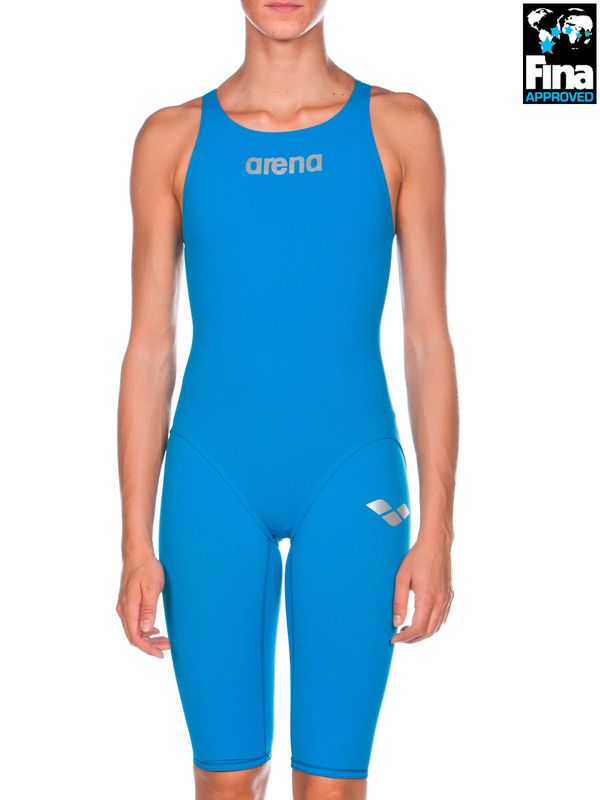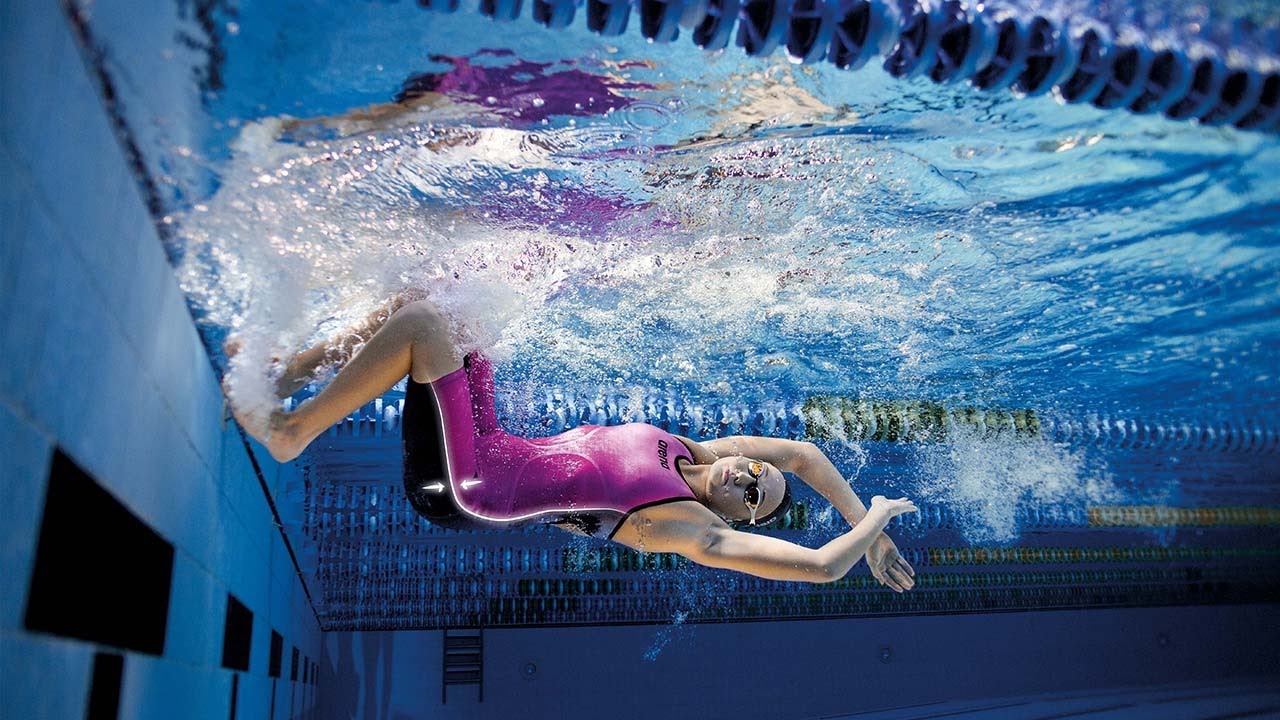Content Menu
● Introduction
● What Is FINA Approved Swimwear?
● Why Is FINA Approval Necessary?
>> 1. Ensuring Fair Competition
>> 2. Standardizing Equipment
>> 3. Protecting the Integrity of Records
● Key Criteria for FINA Approved Swimwear
>> A. Design Requirements
>> B. Material Requirements
>> C. Construction Requirements
● The FINA Approval Process
>> 1. Submission
>> 2. Testing
>> 3. Approval and Labeling
>> 4. Publication
● Benefits of FINA Approved Swimwear
>> Enhanced Performance
>> Compliance with Regulations
>> Confidence for Athletes
● What Does the FINA Approval Label Look Like?
● Which Brands Offer FINA Approved Swimwear?
● When Is FINA Approved Swimwear Required?
● How to Check If Your Swimwear Is FINA Approved
● The Impact of FINA Approved Swimwear on Performance
● A Brief History: The 2009 Swimsuit Controversy
● How to Apply for FINA Approval as a Manufacturer
● Frequently Asked Questions
>> 1. What is FINA approved swimwear?
>> 2. How do I know if my swimsuit is FINA approved?
>> 3. Can I use FINA approved swimwear at any competition?
>> 4. What happens if I use a non-approved suit in a FINA event?
>> 5. Are there different rules for open water and pool swimwear?
● Conclusion
● Citations:
Introduction
In the world of competitive swimming, every fraction of a second counts. Athletes, coaches, and manufacturers are constantly searching for ways to enhance performance while maintaining fairness. One crucial element in this pursuit is swimwear. But not just any swimsuit will do at the highest levels—only those that meet the strict standards set by the sport's international governing body are allowed. This brings us to a vital question: What is FINA approved swimwear?
This comprehensive article explores what FINA approved swimwear means, the rigorous criteria it must meet, the process of approval, its impact on swimming competitions, and answers to the most common questions swimmers and brands have. Whether you are a competitive swimmer, a coach, a swimwear brand, or simply an enthusiast, understanding FINA approved swimwear is essential.

What Is FINA Approved Swimwear?
FINA approved swimwear refers to swimsuits, caps, and goggles that have been tested and certified by FINA (Fédération Internationale de Natation, now known as World Aquatics) to meet specific standards for use in official competitions. Only swimwear bearing the FINA approval mark can be worn at FINA-sanctioned events, including world championships and the Olympic Games[1][2][3][4].
The FINA approval is a seal of legitimacy, ensuring that the swimwear does not provide an unfair technological advantage and that all athletes compete on a level playing field[2][5][3][4].
Why Is FINA Approval Necessary?
1. Ensuring Fair Competition
Technological advancements in swimwear materials and design have the potential to enhance performance beyond natural human ability. In the late 2000s, the introduction of full-body polyurethane suits led to a surge in broken world records, raising concerns that technology was overshadowing athletic skill[6][3][4][7]. FINA responded by setting strict regulations to restore balance and fairness in the sport.
2. Standardizing Equipment
By approving only certain designs and materials, FINA ensures that all swimmers have access to equipment that meets the same standards, regardless of brand or country[1][2][3].
3. Protecting the Integrity of Records
Records set in FINA approved swimwear are recognized as legitimate, while those set using unapproved suits may be disqualified or not recognized[2].
Key Criteria for FINA Approved Swimwear
FINA's approval process focuses on three main areas: design, material, and construction[6][3][4][7].
A. Design Requirements
- Men's Suits: Must not extend above the navel or below the knee.
- Women's Suits: Must not cover the neck, extend past the shoulders, or below the knee.
- Open Water Suits: For both men and women, suits must not cover the neck, extend past the shoulder, or extend below the ankle.
- Decency: The design must not offend morality or good taste, and must not expose the body inappropriately[6][3][4][7].
B. Material Requirements
- Textile Only: Only textile fabrics are allowed. Non-textile materials (like polyurethane) are banned.
- Surface Treatments: Some treatments (e.g., water repellency) may be allowed if they do not close the mesh structure of the textile.
- Thickness: The material must not exceed 0.8 mm in thickness.
- Buoyancy: The suit must not provide more than 0.5 Newton of buoyancy.
- Permeability: Material must allow water to pass through at a rate of at least 80 liters per square meter per second[3][4][7].
C. Construction Requirements
- No Zippers or Fasteners: Suits must not have zippers or any fastening systems.
- Seams: Only functional seams are allowed; they must not create shapes or structures that could provide an advantage.
- One Suit Rule: Only one swimsuit may be worn at a time (except for women, who may wear a one- or two-piece suit)[8][9][10].

The FINA Approval Process
1. Submission
Manufacturers must submit detailed technical drawings, material samples, and at least one finished product for each model to FINA (now World Aquatics)[11][5].
2. Testing
The swimwear is tested for compliance with FINA's rules on design, material, thickness, permeability, and buoyancy. The process is thorough and includes laboratory testing.
3. Approval and Labeling
If a swimsuit passes all tests, it is added to the official list of FINA approved swimwear and can display the FINA approval logo, usually on the rear of the suit[1][10][12][2].
4. Publication
The approved models are listed on the World Aquatics website, where athletes and officials can verify their status[12][11].
Benefits of FINA Approved Swimwear
Enhanced Performance
FINA approved swimwear is designed to enhance a swimmer's performance by reducing drag and improving hydrodynamics. The materials used are often lightweight and provide a snug fit, allowing for greater freedom of movement in the water.
Compliance with Regulations
Wearing FINA approved swimwear ensures that athletes comply with the regulations set forth by FINA. This compliance is crucial for maintaining the integrity of the sport and ensuring fair competition among athletes.
Confidence for Athletes
Knowing that they are wearing approved swimwear allows athletes to focus on their performance without worrying about potential disqualifications due to illegal gear. This confidence can significantly impact their mental state during competitions.
What Does the FINA Approval Label Look Like?
The FINA approval label is a small, non-removable mark, often located on the back of the swimsuit. It includes the FINA logo and an approval code. Since FINA rebranded as World Aquatics, both FINA and World Aquatics labels are valid during a transition period[12].
Which Brands Offer FINA Approved Swimwear?
Major competitive swimwear brands such as Speedo, Arena, TYR, FINIS, Nike, Adidas, Maru, and Jaked all offer FINA approved models. Each year, new models are submitted and reviewed for approval[13][14][3].
When Is FINA Approved Swimwear Required?
- National and International Championships: FINA approved swimwear is mandatory at national championships, British championships, and all FINA-affiliated competitions.
- Record Attempts: Any swim where a record may be set requires FINA approved swimwear.
- Local/Regional Events: FINA approved swimwear is not always required at local or regional meets unless specified by the event organizers[2].

How to Check If Your Swimwear Is FINA Approved
- Look for the Label: Check for the FINA or World Aquatics approval mark on the suit.
- Consult the Official List: Visit the World Aquatics website and search the List of Approved Swimwear using the reference code on your suit[12][11].
- Ask the Manufacturer: Most reputable brands clearly indicate FINA approval in product descriptions.
The Impact of FINA Approved Swimwear on Performance
While FINA approved swimwear cannot provide unfair advantages, it is still engineered to optimize performance within the rules. Features may include:
- Compression: Supports muscles and reduces drag.
- Hydrophobic Coatings: Repels water to minimize resistance.
- Seamless Construction: Reduces friction and enhances fit.
- Lightweight Materials: Ensures minimal water absorption.
A Brief History: The 2009 Swimsuit Controversy
At the 2009 World Championships in Rome, the use of full-body polyurethane suits led to an unprecedented number of world records. These suits provided significant buoyancy and compression, sparking debates about fairness. In response, FINA banned non-textile suits and introduced the current approval process, restoring the focus on athletic ability[6][3][4][7].
How to Apply for FINA Approval as a Manufacturer
If you are a swimwear manufacturer seeking FINA approval for your products:
1. Register: Create an account with World Aquatics.
2. Prepare Documentation: Submit technical drawings, material samples, and finished products.
3. Pay Fees: There are administrative and testing fees for each model and material.
4. Testing: Products are rigorously tested in certified laboratories.
5. Approval: Successful models are listed as FINA approved and may display the logo[11].
Frequently Asked Questions
1. What is FINA approved swimwear?
FINA approved swimwear is any swimsuit, cap, or goggles that have been tested and certified by FINA (now World Aquatics) to meet strict standards on design, material, and construction for use in official competitions[1][2][3][4].
2. How do I know if my swimsuit is FINA approved?
Check for a FINA or World Aquatics approval label on the suit, or search the List of Approved Swimwear on the World Aquatics website using the reference code[12][11].
3. Can I use FINA approved swimwear at any competition?
Yes, FINA approved swimwear can be used at any level, but it is only required at national, international, and record-attempt events. Local meets may not require it unless specified[2].
4. What happens if I use a non-approved suit in a FINA event?
If you use a non-approved suit in a FINA-sanctioned event, your results may be disqualified, and any records set will not be recognized[2][3].
5. Are there different rules for open water and pool swimwear?
Yes. Open water suits must not cover the neck, extend past the shoulders, or below the ankle, while pool suits have stricter limits on coverage (not past knees or shoulders for women, not above navel or below knee for men)[6][3][4][7].
Conclusion
What is FINA approved swimwear? It is the gold standard for competitive swimming apparel, designed and tested to ensure fairness, safety, and optimal performance. Whether you are a swimmer aiming for the podium or a brand seeking to serve the world's best athletes, understanding and adhering to FINA's standards is essential for success in the pool.
Citations:
[1] https://www.simplyswim.com/pages/racing-swimwear-advice
[2] https://www.nessswimwear.co.uk/blog/post/what-does-fina-approved-mean.html
[3] https://www.proswimwear.co.uk/blog/what-is-fina-approved-swimwear/
[4] https://sport-numericus.com/what-is-fina-approved-swimwear/
[5] https://www.simplyswim.com/blogs/blog/what-is-fina-approved-swimwear
[6] https://www.maruswim.com/fina-approved?srsltid=AfmBOopymfBE7xBHKGRo-i88Sm73KSrQgIzj6MQi6zgxcc7NTQgAbUaB
[7] https://www.maruswim.com/fina-approved?srsltid=AfmBOop2vDVDUc_w-x57kaWddePKWqc2ZWg_2NFWzGNVWhpo2-uY8uP0
[8] https://assets.sportstg.com/assets/console/document/documents/swimwearrulesapril.pdf
[9] https://ocs-sport.ams3.cdn.digitaloceanspaces.com/scotswim-full/2022/03/FINA-Rule-Change_Swimsuits.pdf
[10] https://mastersswimming.org.au/wp-content/uploads/2018/08/swimwear_rules_2014.pdf
[11] https://www.worldaquatics.com/swimming/approved-swimwear
[12] https://resources.fina.org/fina/document/2023/09/04/b107f41a-a738-4293-bdc7-c83f6ef84935/FAQ-FINA-to-AQUA-for-Member-Federations-V1.0.1.pdf
[13] https://blog.djsports.com/2009/10/16/official-fina-2010-list-of-approved-swimsuits/
[14] https://www.tyr.com/womens/womens-competition-swimwear/womens-fina-approved
[15] https://www.maruswim.com/fina-approved?srsltid=AfmBOopwEoOE3ysalp5xJJVJ0gUwK6aVeBpUirPWkZilXyTErxdi7RFF
[16] https://approved.swimwear.fina.org
[17] https://resources.fina.org/fina/document/2025/04/24/686585ac-2838-448e-9f9c-b2fac272e135/FAQ-Swimsuit-Related-World-Aquatics-Masters-Championships-Singapore-2025.pdf
[18] https://www.scribd.com/document/803673545/FAQ-FINA-to-AQUA-for-Member-Federations-V1-0-1
[19] https://www.gettyimages.com/photos/allowed-swimwear
[20] http://pvswim.org/official/rules/Revised_FINA_Suit_List_Memo_2009-06-25.pdf
[21] https://resources.fina.org/fina/document/2021/02/15/d47b9a93-a564-42b4-b4c7-e10b304544ea/post_promotion_guidelines_fina_world_aquatics_day.pdf
[22] https://resources.fina.org/fina/document/2021/02/23/7d18d53c-cf57-47f2-adc9-4649c1926044/frsa.pdf


































































